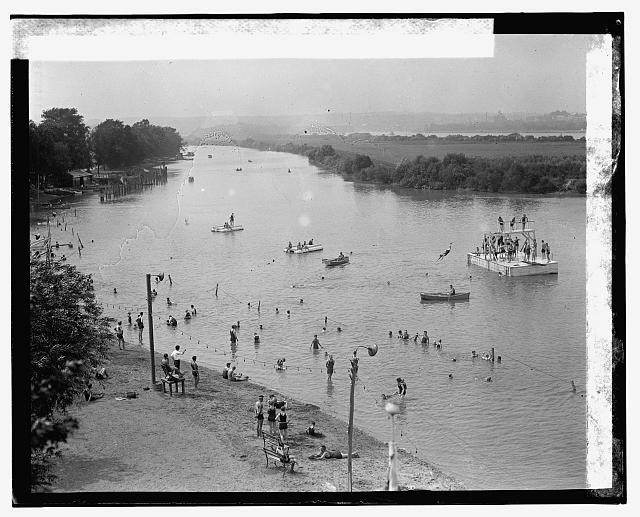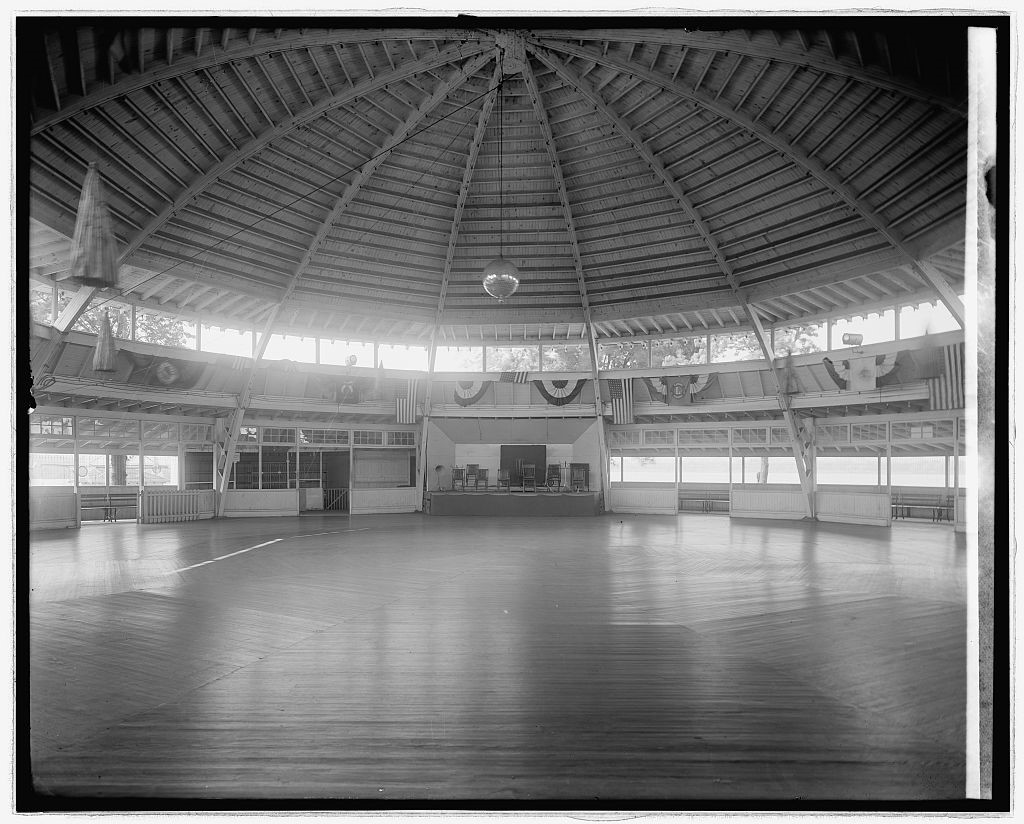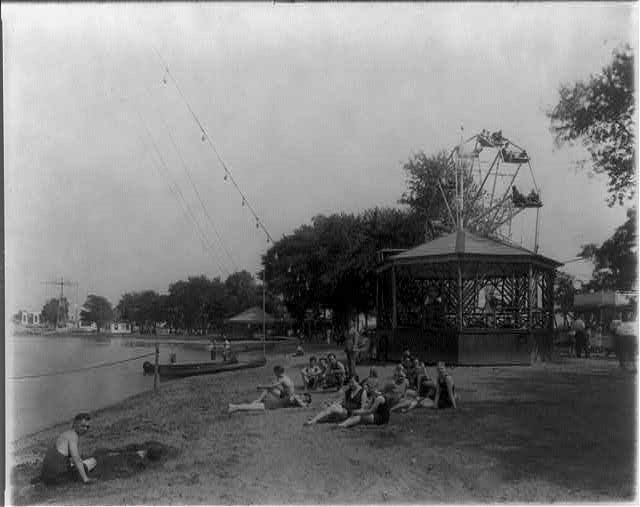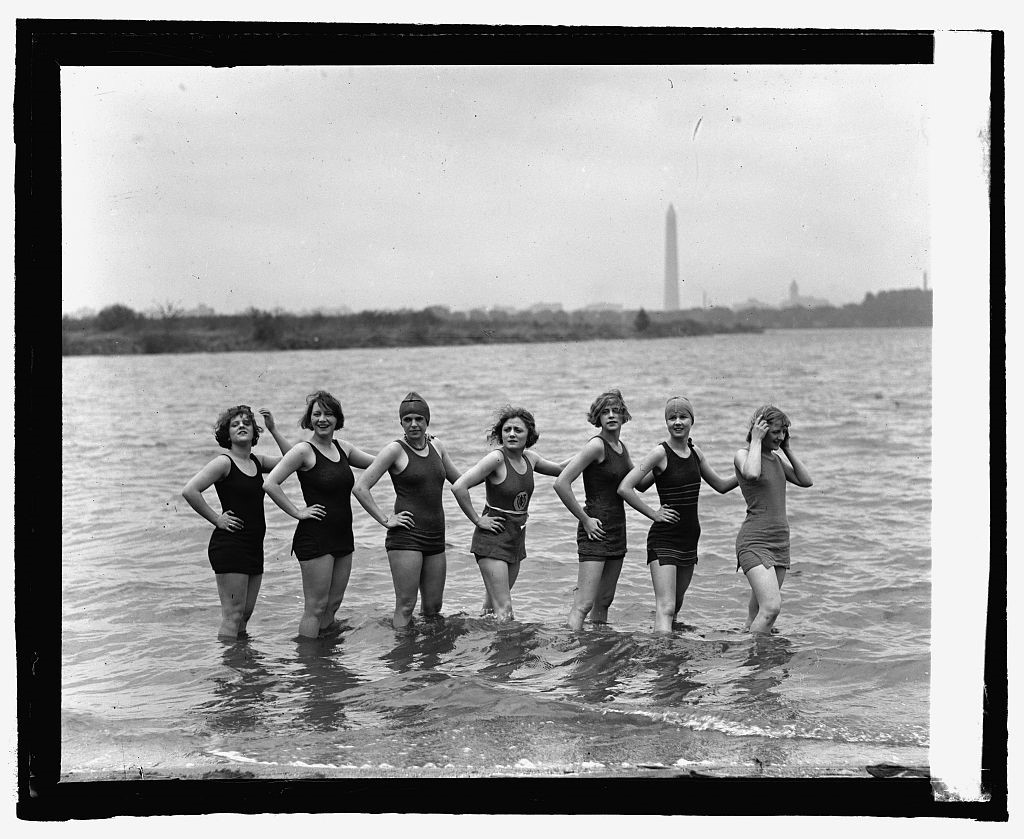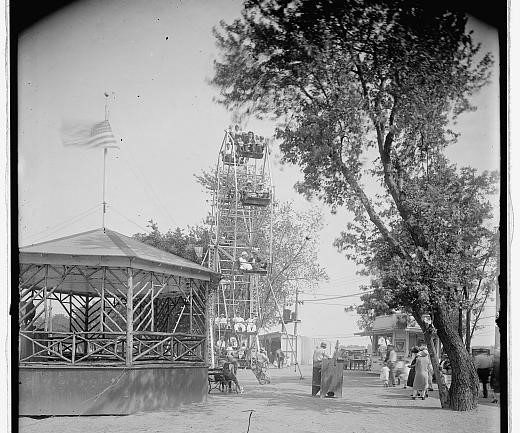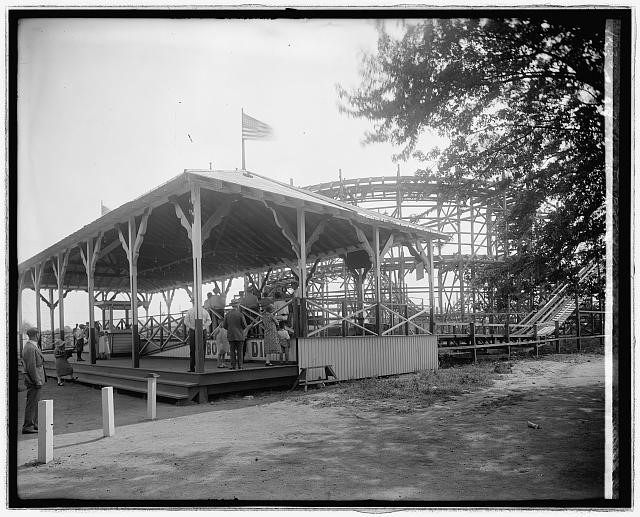Arlington may not come to mind when you think of a beachy oasis, but in the 1920s, we had one of the region’s premier beaches right here.
The Arlington Beach and Amusement Park opened on May 30, 1923, on the Potomac River in the area near the Fourteenth Street Bridge (then known as Long Bridge). For nearly a decade, this was a go-to spot on a hot Arlington day.
Arlington Beach, circa 1925. Image courtesy of the Library of Congress.
The beach was an immensely popular Arlington spot, with crowds of up to 12,000 during the most sweltering days, according to Arlington Magazine. The location featured both a sandy beach on the shores of the Potomac as well as bathhouses and the accompaniments of a full-scale amusement park: a merry-go-round, Ferris wheel, aerial swings, a rollercoaster called “The Whip,” and a ride called “The Dodgem.” Swimmers could use the beach’s diving board and swim at night under searchlights.
Dance pavilion, Arlington Beach. Image courtesy of the Library of Congress.
The park’s dance pavilion was also one of its major draws in its opening season, providing a spot for people of all ages to spend summer evenings – the Washington Jazz Orchestra even performed here. In line with the rising car culture of the early 20th century, the park also advertised extensive parking facilities – important to draw customers from all around the region.
It’s notable that as popular as the Arlington Beach was, it was among the many segregated recreational areas in the County. Even though it was located near predominantly African American neighborhoods, including East Arlington and Queen City, the beach and amusement park were segregated for the duration of their existence.
Beachgoers at Arlington Beach, June 16, 1923. Image courtesy of the Library of Congress.
According to a research project on segregation in Arlington conducted by Lindsey Bestebreurtje at George Mason University: “County resident James ‘Jimmy’ Taylor recalled that Black children swam ‘in a creek on Route 50 called Blue Man Junction.’” African American Arlingtonians were also not permitted to use public pools, and the county’s first pool to allow African American children wouldn’t open up until the 1960s.
Interview with Ruth Jones
In a 1999 oral history interview with Ingrid Kauffman, Ruth Jones described going to the beach as a teenager. Born in March of 1913, Ruth began to visit Arlington Beach around 1927. Oral histories are used to understand historical events, actors, and movements from the point of view of real people’s personal experiences.
Narrator: Ruth Jones
Interviewer: Ingrid Kauffman
Date: March 23, 1999
Ingrid Kaufman: And so can you tell us about Arlington Beach?
Ruth Jones: Well, I was just a young girl, 14 or 15 years old and I met my husband, well, he eventually was my husband.
IK: What was his name?
RJ: Raymond Jones. And he lived in Washington. And we started going to Glen Echo and to Arlington Beach and just having a good time for kids, you know. And so they had a roller coaster, a carousel.
IK: How much did that roller coaster cost?
RJ: Ten cents. A ride at your own risk. That’s the truth, too. It was rickety. After I came to Washington, it was only there for 2 years, 2 or 3 years, then they tore it down.
IK: They tore down the roller coaster?
RJ: Everything. And shut the beach down and all, to put the airport there.
Along the waterfront, Arlington Beach, circa 1925. Image courtesy of the Library of Congress.
As Jones describes, the location was eventually compromised by the construction of the nearby Hoover Airport. The traffic at the airfield grew to include both passenger and mail air service, which provided disruptive to the festivities of the beachgoers and park attendees. The Hoover airfield was also notoriously dangerous – and the aviation industry notoriously unregulated at this point – so the proximity of the beach and park also became a safety issue.
Girls from Keith’s [vaudeville circuit] at Arlington Beach, April 29, 1925. Image courtesy of the Library of Congress.
In 1929, the Washington Air Corporation bought the beach property in order to expand the Washington Airport, which later merged with the Hoover Airport as the Washington-Hoover Airport. However, with the construction of the Washington National Airport (now Ronald Reagan), the Washington-Hoover Airport closed. The former beach grounds were then purchased by the U.S. Department of War and became part of the Pentagon.
Amusement park, Arlington Beach. Image courtesy of the Library of Congress.
Rides at Arlington Beach. Image courtesy of the Library of Congress.
Do you have a question about this story, or a personal experience to share?
Use this form to send a message to the Charlie Clark Center for Local History.
Center For Local History - Blog Post Message Form
Do you have a question about this story, or a personal experience to share? Use this form to send a message to the Center for Local History.
"*" indicates required fields
